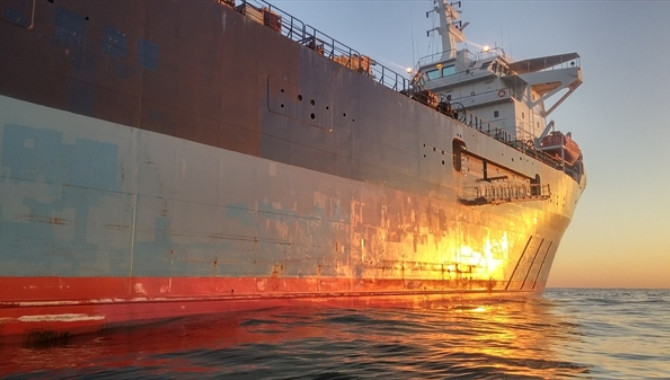
More than 200 representatives from Getting to Zero Coalition members convened virtually this week for the Coalition’s second biannual working session with the objective of advancing the ambition of having commercially viable zero emission vessels operating along deep sea trade routes by 2030. The Coalition members are prepared to move ahead of regulators to develop the technologies and business models needed to meet decarbonization targets.
The maritime industry’s first movers stand steadfast to take the steps needed to develop, test and scale the technologies required to decarbonize international shipping. This is the clear message coming out of the Getting to Zero Coalition’s second biannual working session since its launch one year ago. That momentum is building around shipping’s decarbonization was confirmed last week, when the Getting to Zero Coalition published a preliminary mapping of 66 zero emission pilots and demonstration projects currently underway around the world.
Members of the Getting to Zero Coalition call for ambitious, global regulation
Research presented at the working session shows that the short term-ambition – adopted by members states of the International Maritime Organization in April 2018 – of reducing international shipping’s emissions per transport work by at least 40% by 2030, will not be enough to prevent shipping’s adverse impact on the climate.
“Members of the Getting to Zero Coalition are fully committed to fast-tracking shipping’s decarbonization. I am impressed by the desire to collaborate, share learnings, and take concrete action,” says Johannah Christensen, Managing Director, Head of Projects & Programmes, Global Maritime Forum. “While members are working together to develop new technologies and business models, they call for ambitious, global regulation to set the industry on a climate-friendly course, but they are prepared to move ahead of the IMO and other regulators to ensure that scalable solutions are in place when regulation is adopted,” Johannah Christensen continues.
At the working session’s closing plenary, Nigel Topping, High-Level Climate Action Champion for COP26 said: “The shipping ecosystem could well get to COP26 in Glasgow as an example of how to create a zero emission future and work together around decarbonization. I look forward to seeing how other industries can learn from you and join the race to zero. We have a challenging but inspiring year ahead of us.”
Public infrastructure investments can accelerate shipping’s green energy transition
Covid-19 was notably absent from the conversations at the working session. This provides confidence that the pandemic has not shifted the attention of the maritime industry away from its obligation to decarbonize. On the contrary, Covid-19 may turn out to have a positive impact on shipping’s green energy transition.
“Policymakers are uniquely positioned to accelerate the decarbonization of shipping and other hard-to-abate sectors when deciding on policies and stimulus measures to kickstart the global economy post Covid-19. Governments can and must play an important role in building back better by incentivizing the large-scale demonstration projects that are required to drive down costs and accelerate the development of zero carbon technologies,” says Christoph Wolff, Head of Shaping the Future of Mobility, World Economic Forum.
Shipping’s decarbonization is a large-scale systemic challenge and opportunity
Announced at the UN Climate Action Summit in New York last September, the Getting to Zero Coalition now counts more than 150 member organizations, with non-profit research and development center, The Mærsk Mc-Kinney Møller Center for Zero Carbon Shipping, to be the latest knowledge partner to join the Coalition.
”The decarbonization of shipping and its energy value chains represents a large-scale systemic challenge and opportunity. This working session has proven that it will require close collaboration and collective action between the maritime, energy, infrastructure, and finance sectors, with support from government and international organizations. Members of the Getting to Zero Coalition represent the breadth and width that is required, and we invite others who share our bold ambition to join them,” says Kristian Teleki, Director, Friends of Ocean Action.
To meet the ambition of having commercially viable zero emission vessels operating along deep sea trade routes by 2030, discussions at the working session reveal the need to: develop policies, demand drivers and funding mechanisms to motivate and de-risk first mover investments; adopt policy instruments and market-based measures to close the competitiveness gap between conventional and zero emission fuels and associated infrastructure; explore and narrow down technologies, fuel options and transition pathways; identify and grasp global opportunities for green energy projects that can propel maritime shipping’s decarbonization and contribute to sustainable and inclusive growth in developing economies – while making sure no countries are left behind.
Source:XINDE MARINE NEWS
The opinions expressed herein are the author's and not necessarily those of The Xinde Marine News.
Please Contact Us at:
media@xindemarine.com


 Ningbo Containerized Freight Index Weekly Commentar
Ningbo Containerized Freight Index Weekly Commentar  Ningbo Containerized Freight Index Weekly Commentar
Ningbo Containerized Freight Index Weekly Commentar  Ningbo Containerized Freight Index Weekly Commentar
Ningbo Containerized Freight Index Weekly Commentar  BIMCO Shipping Number of the Week: Bulker newbuildi
BIMCO Shipping Number of the Week: Bulker newbuildi  Ningbo Containerized Freight Index Weekly Commentar
Ningbo Containerized Freight Index Weekly Commentar  Ningbo Containerized Freight Index Weekly Commentar
Ningbo Containerized Freight Index Weekly Commentar